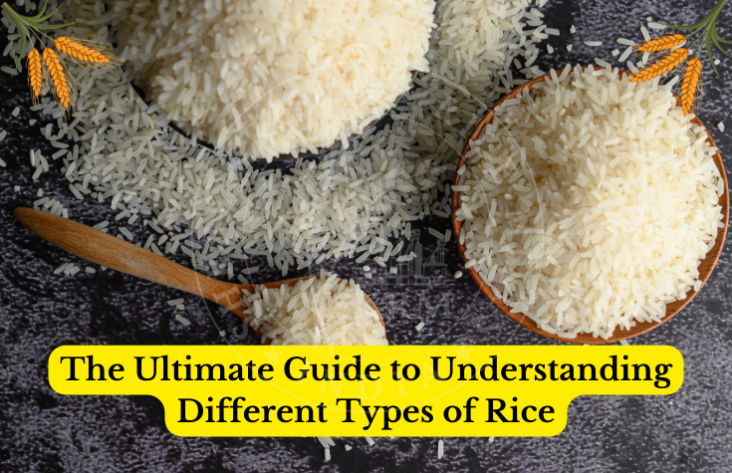The Ultimate Guide to Understanding Different Types of Rice

Are you a rice enthusiast looking to expand your knowledge about different types of rice available in the market? Look no further! In this comprehensive guide, we will delve into the various forms of rice, including brown, raw, steamed, and parboiled rice. We will also explore the milling process involved in producing these different forms of rice, and discuss the most common types of rice based on grain length: long grain, medium grain, and short grain rice. Let’s get started!
Rice Information: Understanding the Different Forms
Brown Rice: Commonly Known as Milled or Brown Rice
Brown rice is a highly nutritious whole grain that retains its outer bran layer, giving it a chewy texture and nutty flavor. This form of rice is rich in fiber, vitamins, and minerals, making it a popular choice for health-conscious individuals. Brown rice takes longer to cook compared to white rice due to its intact bran and germ layers.
Raw Rice: Commonly Known as White Rice
White rice, also known as raw rice, is the most commonly consumed type of rice worldwide. During the milling process, the outer husk, bran layer, and germ of the rice grain are removed, resulting in a polished white appearance. White rice has a softer texture and milder taste compared to brown rice.
Steamed Rice: A Different Form of Rice
Steamed rice is a unique form of rice that has been partially cooked through steaming before packaging. This process helps retain the nutrients and flavor of the rice while reducing the cooking time. Steamed rice is popular in Asian cuisines and is often used in dishes like sushi and fried rice.
Parboiled Rice: The Rice with Added Nutritional Benefits
Parboiled rice is a special type of rice that undergoes a unique parboiling process before milling. This process involves soaking, steaming, and drying the rice while it is still in the husk. Parboiled rice retains more nutrients compared to white rice and has a firmer texture and separate grains when cooked.
The Milling Process in Different Forms of Rice
The milling process plays a crucial role in determining the final form of rice. During milling, the outer husk, bran layer, and germ are removed to produce white rice. Brown rice retains its bran and germ layers, while steamed and parboiled rice undergo additional processing steps to achieve their desired texture and flavor.
Type of Rice: Long Grain, Medium Grain, Short Grain
Long Grain Rice
Long grain rice is characterized by its slender, elongated shape and stays fluffy and separate when cooked. This type of rice is commonly used in dishes like pilafs, biryanis, and salads. Long grain rice has a lower starch content, making it less sticky compared to medium and short grain varieties.
Medium Grain Rice
Medium grain rice has a shorter and plumper shape compared to long grain rice. This type of rice tends to be slightly stickier and more tender when cooked, making it ideal for dishes like risotto, paella, and sushi. Medium grain rice absorbs flavors well and is versatile in various cuisines.
Short Grain Rice
Short grain rice is round and plump in shape, with a higher starch content that gives it a sticky and chewy texture when cooked. This type of rice is commonly used in dishes like sushi, rice pudding, and rice balls. Short grain rice is popular in Asian cuisines for its ability to hold together when molded.
In conclusion, understanding the different forms of rice and the milling process involved can help you make informed choices when cooking or purchasing rice. Whether you prefer the nutty flavor of brown rice, the versatility of white rice, or the added nutrients of parboiled rice, there is a type of rice to suit every preference and culinary need. Experiment with different types of rice to discover your favorite flavors and textures in various dishes! Enjoy exploring the world of rice and elevating your culinary creations with these diverse and delicious grains.

